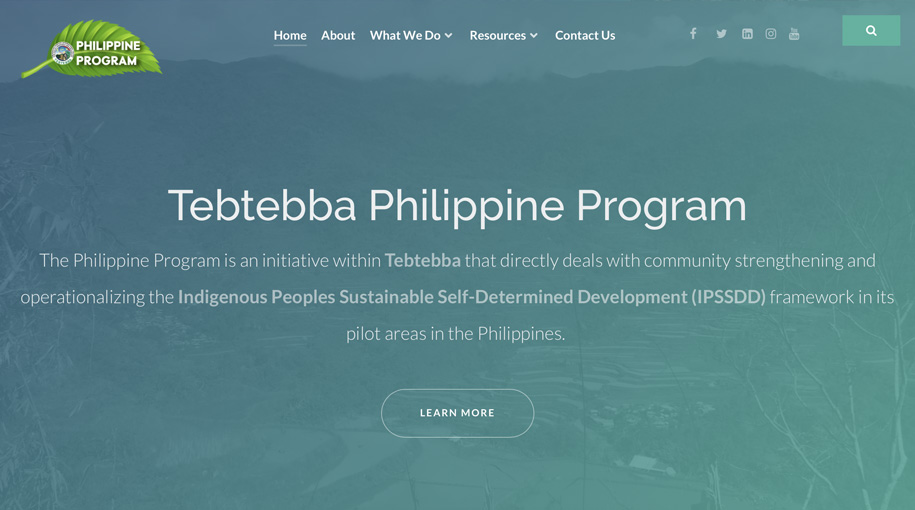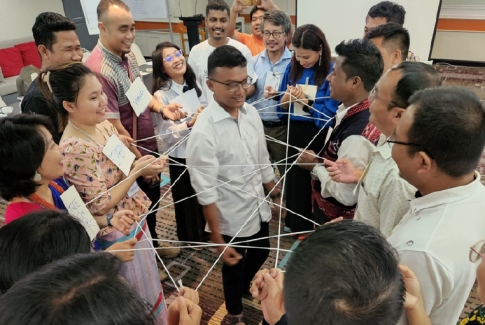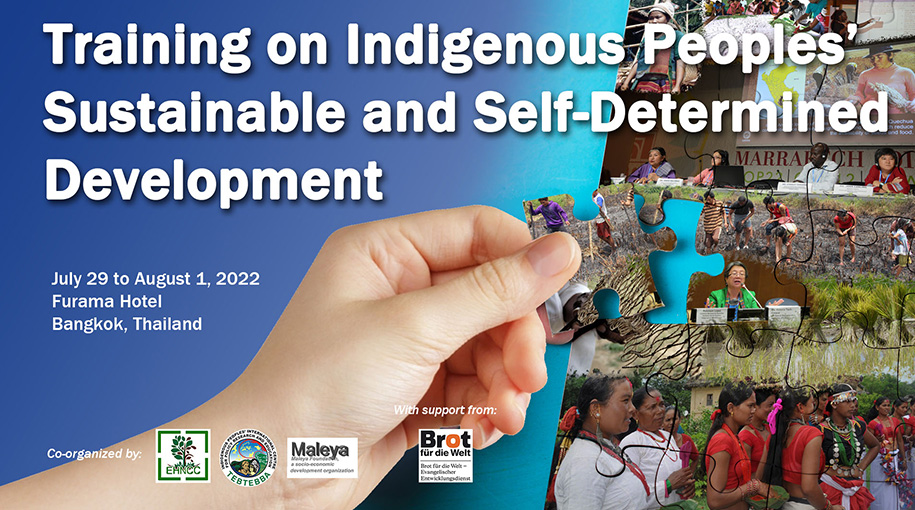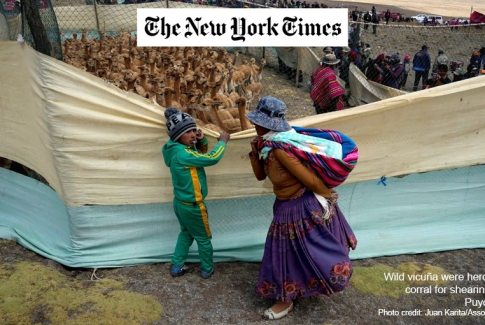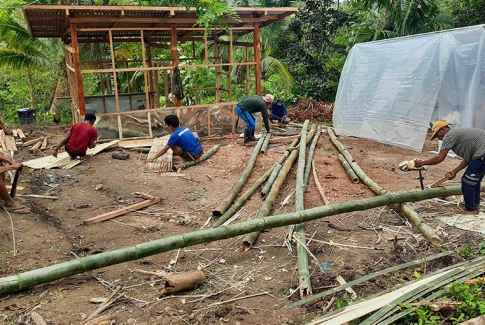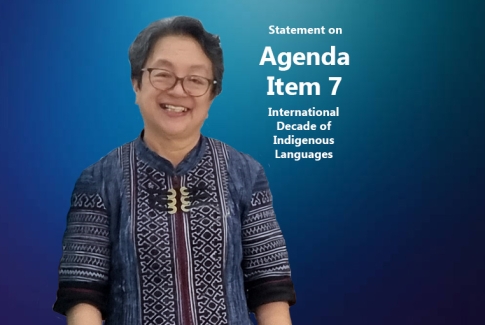EMRIP 15TH Session
UN Geneva
5 July 2022
Agenda Item 7: International Decade of Indigenous Languages
Presented by Victoria Tauli-Corpuz, Tebtebba (Indigenous Peoples’ International Centre for Policy Research and Education)
Madame Chair,
This Agenda Item on Indigenous Languages is very important and I would like to use this opportunity to speak of activities we in Tebtebba have undertaken to promote the goals of the Indigenous Decade and to share our future plans as well.
To recall, the Global Plan of Action of the Indigenous Decade have stated the following which I will quote.
“The right of free unimpeded choice of language use, expression, and opinion as well as self-determination and active engagement in public life without fear of discrimination is a prerequisite for inclusiveness and equality as key conditions for the creation of open and participatory societies.
Beyond the foundational contribution of languages to the preservations of biological diversity, many of the world’s languages are geographically located within the planet’s hotspots of biodiversity. Indigenous traditional knowledge of the environment represents a key resource for developing innovative solutions to combating hunger, climate change and protecting biodiversity. The protection of traditional knowledge systems is built into the fabric of Indigenous languages.
The International Decade of Indigenous Languages offers us a unique opportunity to collaborate in policy development, to ensure continuity and coherence of actions and stimulate an intercultural dialogue in the true spirit of multi-stakeholder engagement, to contribute to making human rights a reality, and to take necessary measures in an interdisciplinary manner to support and strengthen Indigenous languages around the world. “
Tebtebba, my organization, has taken seriously the right of indigenous peoples to their cultures, traditional knowledge and languages and thus we warmly welcome the adoption of the Decade and the Global Plan of Action. We have collaborated with various universities in the Philippines and linguists who want to contribute in revitalizing and promoting the indigenous languages in the Philippines which are more than 100. I am a fluent speaker of my own indigenous language, Kankanaey-Igorot and I am fully aware of what the threats are to losing a language. Many indigenous languages in the Philippines are at risk, especially those spoken by smaller indigenous populations. The main reason for this is the continuing discrimination against indigenous children who still speak their mother tongue amidst the efforts of the Department of Education to promote the dominant languages.
One major step needed is to encourage our indigenous peoples to continue to assert their right to speak their own languages. We asked that the Department of Education encourage the use of indigenous languages as the medium of instruction in places where they are the majority but then we realized that there are no orthographies (the study of correct spelling according to established usage), dictionaries and materials on any of the indigenous languages . Furthermore , there are no trained teachers who can also use and teach the language. These led us to work with linguists and brought them to the communities we work with to learn more about the languages of indigenous peoples and help develop teaching materials on these languages. We did this with the Mandaya and Erumanen Menuvu in Mindanao. The elders taught them how they speak their languages and what these mean and it was the first time most of these academics had this experience. We also worked with some personnel of the Department of Education. Our hope is that the Department of Education will publish the results of these efforts and train teachers who can teach and use the languages. However, there is a long way to go, as the budgets they have won’t cover the expenses which will be entailed. Thus, we planned to hold a national conference on indigenous languages before the year ends.
A UNESCO report states that out of the 7,000 languages in the world today, 6,700 are indigenous peoples’ languages. According to the UN Permanent Forum on Indigenous Issues, 40 percent of these indigenous languages are at risk of disappearing. This has prodded the Forum and other indigenous peoples’ mechanisms, as well as indigenous peoples themselves, to push for the adoption of the International Year of Indigenous Languages in 2019 and the subsequent push for the International Decade (2022-2032). The Global Plan of Action contains the recommendations on how to ensure that indigenous languages are revitalized, protected and maintained. There is no doubt that the IYIL has achieved some successes but these need to be further expanded and consolidated by the implementation of the Global Plan. It is my hope that EMRIP keeps the theme of indigenous languages in its sessions during the Decade.
We, in Tebtebba, will be doing our role in implementing the Global Plan of Action in the 13 countries we work in Asia, Africa and Latin America under a partnership we call ELATIA (Maasai word for neighbourhood). The impact identified by the Global Plan is that “ Indigenous languages are preserved, revitalized, promoted and used across all socio-cultural, economic, environmental, and political domains and are drivers for building peace, justice, development and reconciliation in our societies”. We will contribute in achieving the 4 outcomes, 10 Outputs and corresponding activities contained in the Global Plan. However, we also want to stress that the States and the multilateral bodies, such as UNESCO, among others need to comply with their commitments contained in the plan. The contributions of these actors will be monitored by us and other indigenous organizations through our Community-based Monitoring and Information Systems (CBMIS) and the Indigenous Navigator.
Thank you for this opportunity to share Tebtebba’s views and activities and we look forward to a higher level of partnership with the governments and the multilateral bodies as well as with donors.



